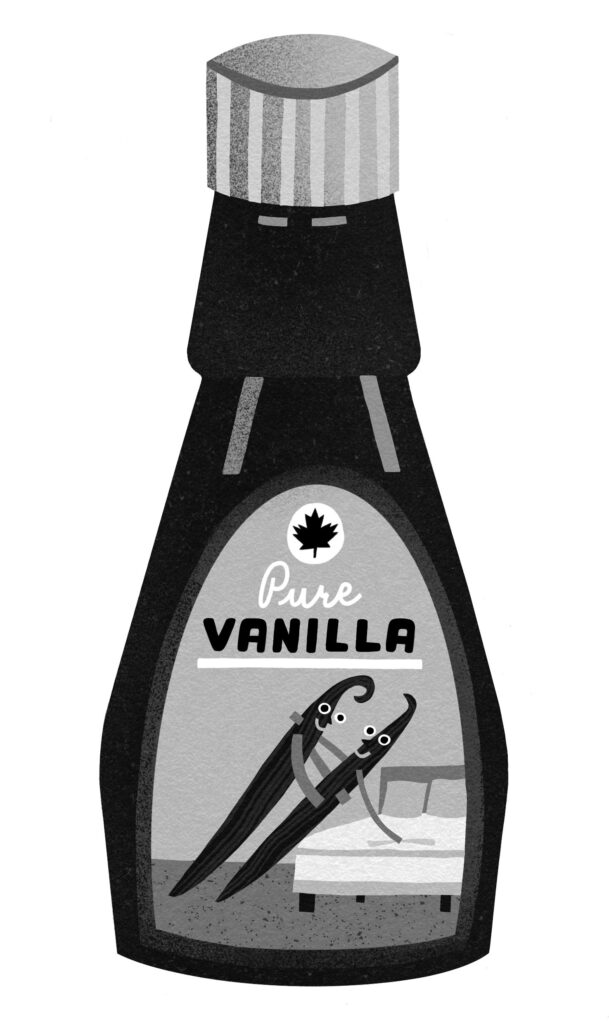Michelle Bedard published Canada in Bed: An Irreverent Study of Canadian Sexual Attitudes in 1969. Its cover was a little risqué: a drawing of a couple in bed, under a Maple Leaf quilt, the man engrossed in some financial booklet while the woman, red-nippled and blond, expresses frustration. The book, which set out to examine satirically the “perilous shortage of love in Canada,” is really a bundle of sour notes on what Bedard considered a country of emasculated men, whom she proceeded to categorize by profession, ranking their potency and lovemaking abilities. Bedard described a confused, sexually frustrated society with something of a longing for the pioneer days when “beating back the bush, planting the corn, churning the butter and spinning the yarn, [left] no time for indulgences such as neuroses, psychoses, fetishes, perversions, homosexuality or even for plain old-fashioned bachelorhood.” Lord knows what she’d think now.
(Michelle Bedard was the one‑off nom de plume of Joan Finnigan, the daughter of the hockey legend Frank Finnigan. When she died in 2007, she was remembered not for Canada in Bed but as the “unofficial historian, champion and poet laureate of Ontario’s Ottawa Valley.”)
Among all her musings, Bedard made one (almost) good point. “Sometime soon a rational, scholarly and objective study must be made of the relationships between Canadian men and women,” she wrote, before going south with “Bed is the proving ground of that relationship between man and woman that is the most significant part of all our lives, and such scientific study I leave to men.” She then quoted Lord Byron: “Love to a man is a thing apart / ’Tis a woman’s whole existence.” However ironic Bedard was being at this point, the scholarly and objective study she anticipated has arrived — with a woman at the helm, no less. Tina Fetner’s Sex in Canada: The Who, Why, When, and How of Getting Down Up North is not the first sex study done in this country, but it is a noteworthy attempt to fill what Fetner calls the “silent spaces” that remain in our understanding of the field.

A bland recipe since 1867.
Sandi Falconer
Fetner, a sociologist at McMaster University, in Ontario, already has a long list of sex-themed publications to her name. With this latest, she casts her widest net yet, covering topics of preference, frequency, and pleasure as well as their relationship to religion, age, locality, language, and education. Her primary research, conducted in 2018, involved 2,303 Canadians aged eighteen to ninety, proportionally distributed by region, language, and gender. (This study was in part a response to an oversaturation of American statistics in Canada. Because there were few respondents from the Territories, they aren’t included in Fetner’s final analysis.)
As is typical of sociologists, Fetner presents the facts without judgment; she leaves us to make up our own minds about what these statistics show. In this absolute slew of data, it’s hard to know what any of it means, if any of it means anything at all. At its least consequential, the study turns certain “I experimented in college” tropes on their head. At its most consequential, it shows that our designations for certain identities are probably too rigid.
For example, common-law partners have more sex than either married or single people, and parents get it on more than non-parents. In the year leading up to the study, a third of Canadian adults went without any partnered sex at all, and 11 percent were virgins. Maybe they were playing it safe, as over the same time, 100,000 people were diagnosed with chlamydia, 30,000 with gonorrhea, and 6,000 with syphilis. Meanwhile, 10 percent of gay men report having sex with at least one woman, only a little more than the 6 percent of straight men who have bedded down with another guy. There are straight men who have slept with only men, and straight women who have slept with only women. These aren’t staggering figures, but they’re enough to rattle perceptions of who is doing whom.
Part of the fascination with sex is that we want to know what the neighbours are doing, and Fetner outlines enough regional differentiation to satisfy curiosity. A 2016 study published in The Journal of Sex Research found in its sample of Quebecers that “voyeurism, fetishism, frotteurism, and masochism interested both male and female respondents at levels above what is usually considered to be statistically unusual (15.9%).” Fetner is not so specific, simply stating, “If you imagine that French-speaking Canadians ‘do it’ more often, more casually, and perhaps in more varied and interesting ways than their English-speaking counterparts, you are probably correct.” Quebec leads the way in partnered sex, masturbating, and oral sex. British Columbians are last. The Prairies use sex toys the most often, Quebec the least.
Other groups of interest include urbanites, who have only slightly more sex than rural Canadians, and Catholics, who have slightly more oral sex than atheists but a lot more than evangelical Protestants. Those who lean liberal are far more likely to use vibrators or sex toys or have oral sex than conservatives. (Insert your own political/regional witticism here.)
One can think of sex — the act, at least — as constant. Regardless of all our technology or social hangups, there is nothing new at the base of sex: part A has been meeting part B (or part A, for that matter) for millennia. But maybe some things have changed in the years since 1969, when Bedard saw a love landscape that was flaccid, liquored up, and snoring on the couch — and when contraception and abortion were newly decriminalized. Canada is certainly different. Our population has nearly doubled and the fertility rate nearly halved. We’re more urban, more multicultural, better travelled, and more exposed to the facts of life, through the internet and television, than ever before.
Changes in sexual attitude are tied to social mobility, itself a product of good and varied education. Our carnal choices are made in a social context, Fetner writes, adding that “many Canadian families, faiths, and communities hew to a sexual morality that fits better with the first half of the twentieth century than with the twenty-first.” Could it be that, in our move away from the secretary-screwing ’60s, the free-love ’70s, the AIDS-terrified ’80s, the sex-sells ’90s, and the internet-porn noughties, we somehow, inexplicably, landed somewhere relatively wholesome?
According to Fetner, three in every four Canadians are happy with their sex lives, even if they dovetail “with traditional, restrictive morals.” It’s okay to be vanilla. Sex is sex and doesn’t have to be freaky, twisty, obscene, or what have you; it just has to be good for all involved. Confirming that sentiment, “Canadian morality around sex and sexuality emphasizes consent and honesty between partners, with a steady disavowal of extramarital sex.” Just 6 percent of partnered respondents consider their relationship “open,” and only 10 percent admit to being in one where cheating occurs. If sex is a reflection of our moral self-image, does that mean we are less the casual, hookup culture we assume and more like the bush-beating, butter-churning pioneers Bedard pined for?
Today’s emphasis on social justice parallels in some ways the social purity movements of the early 1900s, with their calls for expanded suffrage and new sexual freedoms. Since then, big changes both in society and in the law have come regarding premarital sex, women’s virginity and women’s health, masturbation, and same-sex relationships, but what restricts behaviour even more than government regulation is the neighbour on the lawn chair or porch swing, watching the comings and goings and taking notes. Gossip, Fetner observes, has always been a key part of keeping people in line, and it seems more salacious now than ever, with indiscretions — both real and perceived — enough to land anyone in a world of trouble. To make another comparison, Justin Trudeau’s relatively normal divorce (40 percent of Canadian marriages end in one, according to Fetner) has seen him put under the microscope of armchair pundits looking for hints of a relationship scandal. But in Bedard’s twentieth century, “Swinging Pierre” Trudeau was having it off left, right, and centre, with little detriment to his career. The government still has no business in the bedrooms of the nation, but one can only imagine what he — a Catholic Liberal Quebecer — was up to.
The natural response to reading a work such as this is to compare one’s own experiences with the statistics given. In matters of body and mind, one longs to be “normal”— unless “extraordinary” is available — even if studies like this are invested both in the collection of data and in using that data to dispel the very notion of normal, which is merely an arbitrary point on a social scale of right and wrong. Still, when it comes to other measurements, one can’t help but wish that Canadians were a little weirder, a little more perverse — that Fetner’s study revealed some secret about ourselves we couldn’t look away from. Maybe from a sense of decency, maybe because it’s scientifically passé, she doesn’t give us what would surely be some titillating numbers: lengths and widths, seconds and minutes, perhaps even ounces, of both volume and mass. All in the name of science, of course.
Sex in Canada is not a book everyone needs to read. But enough of us should read it so that these facts and figures can be brought up at parties, around the dinner table, or in bed. And if you find yourself apart from those scenes, sitting at home alone, wondering whether everyone is having more fun than you, the answer, Fetner might suggest, is that they’re probably not. In fact, if you go out and seek it, you’ll likely find someone looking for exactly the same kind.
J. R. Patterson was born on a farm in Manitoba. His writing appears widely, including in The Atlantic and National Geographic.

